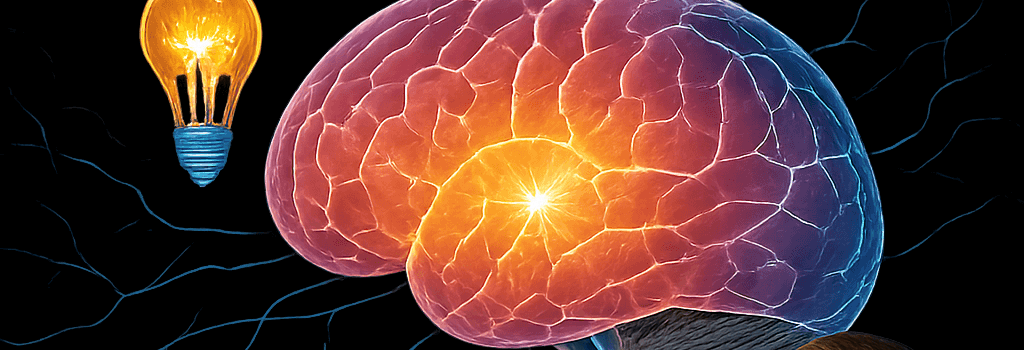Neural Mechanics of Nap-Induced Eureka Moments

From Dmitri Mendeleev’s dream of the periodic table to Thomas Edison’s dozing-off trick, researchers have long speculated that naps can spark creative breakthroughs. A new study from Hamburg University not only captures these eureka moments in real time but also identifies the precise EEG signatures that predict them.
Historical Anecdotes and Early Theories
Dmitri Mendeleev reportedly fell asleep at his desk and dreamed of a table in which all chemical elements aligned perfectly. Thomas Edison later refined this approach: he’d hold a metal cup while dozing in a chair, believing that its fall would jolt him awake at the moment of insight. Visionaries like Mary Shelley, Salvador Dalí and Nikola Tesla claimed similar nocturnal flashes of genius. But anecdote alone can’t reveal the neural dynamics at play.
Recreating Edison’s Cup-Triggered Insights
In 2024, Célia Lacaux’s team at Sorbonne University tested Edison’s method using a 64-channel EEG system (sampling rate 1,000 Hz). Participants solved a multi-step math puzzle hiding a simple shortcut. Holding various objects (spoons, stress balls, steel spheres), they entered light non-REM sleep (N1) before dropping the object. Lacaux et al. reported a 70 percent success rate in uncovering the shortcut immediately after the drop.
Hamburg’s Nicolas Schuck attempted a direct replication using identical porcelain cups. Unexpectedly, cups seldom fell and N1 naps alone did not boost performance. Instead, participants reaching N2 sleep—characterized by spindles (12–15 Hz) and K-complexes—achieved the highest discovery rates. This prompted a closer look at continuous EEG measures rather than classical sleep staging.
Dot-Tracking Experiment and EEG Spectral Slope Analysis
Experimental Setup
Ninety healthy adults (age 18–35) performed a visual motion task: tracking small orange and purple dots moving clockwise or counter-clockwise within a circular aperture. Jitter levels varied to modulate difficulty. After 100 practice trials, participants took a 20-minute supervised nap; a control group remained awake.
EEG Recording and Signal Processing
EEG was recorded with a 32-channel BrainVision system, electrodes placed according to the 10–20 system. Data were band-pass filtered (0.1–45 Hz), downsampled to 500 Hz, and cleaned of eye-blink artifacts via independent component analysis (ICA). Spectral slopes were estimated by linear regression on the log–log power spectrum between 4 and 40 Hz.
Findings on Spectral Slope and Insight Prediction
Participants entering N2 sleep solved the color-coding shortcut in 82 percent of cases, compared with 61 percent for N1 and 55 percent for wake-resting controls. A random forest classifier trained on spectral slope features yielded 78 percent accuracy in predicting who would have a eureka moment—outperforming models based solely on discrete sleep stages.
Key result: steep EEG spectral slopes (indicating strong low-frequency dominance) correlated with insight, suggesting that momentary shifts in cortical excitation–inhibition balance facilitate creative reorganization.
Integrating fMRI with EEG: Towards a Multimodal Sleep Study
To map which brain regions orchestrate nap-induced insights, Schuck’s team is launching a follow-up using simultaneous high-density EEG and 3 Tesla fMRI (TR=2 s, voxel size=3 mm³). This multimodal approach will link EEG spectral events—spindles, slow waves and slope changes—to BOLD activations in hippocampus, prefrontal cortex and thalamus during sleep. Early pilot data (n=10) show transient hippocampal bursts time-locked to steep EEG slope epochs.
Implications for Brain-Computer Interfaces and AI
The ability to detect imminent insights from EEG opens avenues for closed-loop brain-computer interfaces (BCIs). Future wearable headbands (e.g., Muse, OpenBCI Ultracortex) could monitor spectral slope in real time and deliver subtle acoustic or electrical stimulation to prolong optimal sleep microstates. On the AI side, deep neural networks can be trained on large EEG-fMRI datasets in the cloud, using federated learning to preserve privacy while refining insight-prediction algorithms.
Future Directions and Expert Perspectives
“By moving beyond coarse sleep stages to continuous EEG metrics, we can pinpoint the micro-dynamics that underlie sudden creative leaps,” says Dr. Elena Martinez, a sleep neuroscientist at MIT’s McGovern Institute. “This has profound implications for education, neurorehabilitation and BCI design.”
Ongoing studies will explore how pharmacological modulation (e.g., low-dose zolpidem) and non-invasive stimulation (tACS at spindle frequencies) influence spectral slope and insight rates. The ultimate goal is to harness nap-induced neural plasticity for memory consolidation and problem-solving enhancement.